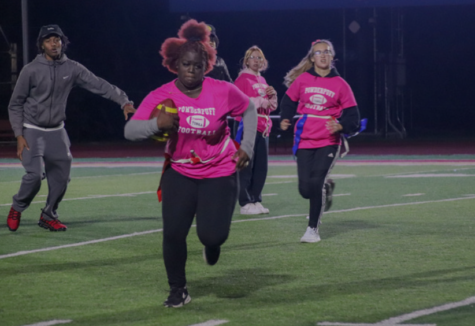Stressing safety
Innovative, proactive and reactive systems aim to minimize risk within high school sports
November 4, 2019

Over the last few decades, the increasing awareness of sports-related injuries has shaped high school sports, and with recent breakthroughs in understanding concussions and its long-term effects, emphasis is being put on the need for innovative and proactive solutions.
This season, select players from the Winnetonka football team will be donning their helmets, now equipped with a technology that has the potential to make practices and games all the more safer, according to head football coach Benny Palmer.
The InSite helmet system places sensors inside existing, compatible helmets, allowing coaches to remotely monitor the frequency and severity of head impacts during a game. Thus, when an abnormal or potentially dangerous head collision occurs, sideline staff are notified and can take action immediately.
While identifying and treating potential concussions is an important aspect of the helmet system’s purpose, Palmer highlights its role in the adjustment of player technique during practice.
“This system will allow us to look at real data regarding the rate of contact that we are taking, allowing me to design a practice schedule that is conscious of [that] contact…,” Palmer said. “We are constantly working to find ways to limit the rate of contact… in practice. The season is long, and we want to stay healthy all season long.”
Winnetonka was chosen as one of four high schools to participate in the program starting this season, with over 50 high schools in the Greater Kansas City area already using the technology. A total of five InSite Systems were donated on Sept. 25 to be installed into five players’ helmets.
Innovative technology, such as this helmet system, along with the evolution of the sport itself has allowed football to become a highly-popular high school sport, in which potential injuries pose much less of a risk now than in the past.
“Students and parents should not think that playing football is going to lead to an immense amount of side effects,” Palmer said. “Instead, because of the improvements towards player safety, the [gained] attributes of hard work, teamwork, pride, effort, enthusiasm, and family… should outweigh the risks of playing.”
The way that sports are approached by coaches, trainers and schools has a significant impact on the players’ safety as well, Palmer said. With any sport, proactive and reactive responses are needed to decrease the risk of injury.
Proactive responses focus on preventing players from being put into situations where a head injury could occur, whereas reactive responses are often a series of events that happen after a player receives a head injury.
Likewise, to prevent head injuries and potential concussions, soccer coach David Flynn stresses the need for players to be aware of everything that is happening on the field.
“Situational awareness is the number one thing,” Flynn said. “For example, in practices and things like that, we really emphasize [to] keep the ball on the ground. If we’re doing stuff that’s in the air, everybody knows that we’re doing it in the air, and everybody’s aware of it.”
However, with the inevitability of concussions occurring, it’s important to have procedures in place to ensure players can safely recover. Currently, players who are confirmed to have a concussion have to undergo a five-day protocol, where they need to demonstrate they are physically and cognitively able to continue in the sport.
“We’ve had some students who’ve got- ten… severe concussions,” Flynn said, “and it’s taken them weeks, or even months to be able to get to the point where they can maybe come back, and we’ve had others that have had a concussion, and then within a day or two, they’re able to go through the protocol and they only miss a week.”
As frequently as every year, coaches must undergo rule reviews as well as training on how to identify concussions and the resulting protocols.
“The number of concussions that we see, in terms of the reported concussions, has actually gone up,” Flynn said. “But that’s not necessarily because there are more concussions. It’s because we’re much more aware of what’s happening now than we were 10, 15 years ago [when] there were likely players who had concussions, but you just got up, dusted yourself off and went back in it. Now we don’t do that.”












































